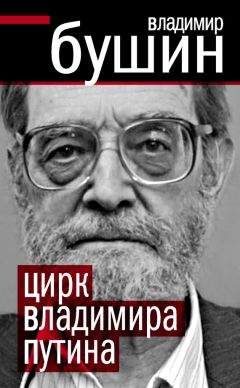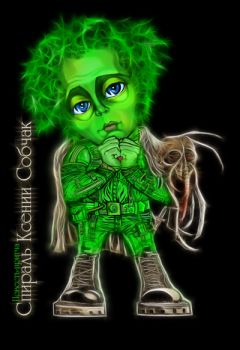Steven Dubner - Freakonomics
percent relative to the national average. If you subtract that 18 percent from New York’s homicide reduction, thereby discounting the effect of the police-hiring surge, New York no longer leads the nation with its 73.6 percent drop; it goes straight to the middle of the pack. Many of those new police were in fact hired by David Dinkins, the mayor whom Giuliani defeated. Dinkins had been desperate to secure the law-and-order vote, having known all along that his opponent would be Giuliani, a former federal prosecutor. (The two men had run against each other four years earlier as well.) So those who wish to credit Giuliani with the crime drop may still do so, for it was his own law-and-order reputation that made Dinkins hire all those police. In the end, of course, the police increase helped every-one—but it helped Giuliani a lot more than Dinkins.
Most damaging to the claim that New York’s police innovations radically lowered crime is one simple and often overlooked fact: crime went down everywhere during the 1990s, not only in New York. Few other cities tried the kind of strategies that New York did, and certainly none with the same zeal. But even in Los Angeles, a city notorious for bad policing, crime fell at about the same rate as it did in New York once the growth in New York’s police force is accounted for.
It would be churlish to argue that smart policing isn’t a good thing. Bill Bratton certainly deserves credit for invigorating New York’s police force. But there is frighteningly little evidence that his strategy was the crime panacea that he and the media deemed it. The next step will be to continue measuring the impact of police innovations—in Los Angeles, for instance, where Bratton himself became police chief in late 2002. While he duly instituted some of the innovations that were his hallmark in New York, Bratton announced that his highest priority was a more basic one: finding the money to hire thousands of new police officers.
Now to explore another pair of common crime-drop explanations:
• Tougher gun laws
• Changes in crack and other drug markets
First, the guns. Debates on this subject are rarely coolheaded. Gun advocates believe that gun laws are too strict; opponents believe exactly the opposite. How can intelligent people view the world so differently? Because a gun raises a complex set of issues that change according to one factor: whose hand happens to be holding the gun.
It might be worthwhile to take a step back and ask a rudimentary question: what is a gun? It’s a tool that can be used to kill someone, of course, but more significantly, a gun is a great disrupter of the natural order.
A gun scrambles the outcome of any dispute. Let’s say that a tough guy and a not-so-tough guy exchange words in a bar, which leads to a fight. It’s pretty obvious to the not-so-tough guy that he’ll be beaten, so why bother fighting? The pecking order remains intact. But if the not-so-tough guy happens to have a gun, he stands a good chance of winning. In this scenario, the introduction of a gun may well lead to more violence.
Now instead of the tough guy and the not-so-tough guy, picture a high-school girl out for a nighttime stroll when she is suddenly set upon by a mugger. What if only the mugger is armed? What if only the girl is armed? What if both are armed? A gun opponent might argue that the gun has to be kept out of the mugger’s hands in the first place. A gun advocate might argue that the high-school girl needs to have a gun to disrupt what has become the natural order: it’s the bad guys that have the guns. (If the girl scares off the mugger, then the introduction of a gun in this case may lead to less violence.) Any mugger with even a little initiative is bound to be armed, for in a country like the United States, with a thriving black market in guns, anyone can get hold of one.
There are enough guns in the United States that if you gave one to every adult, you would run out of adults before you ran out of guns. Nearly two-thirds of U.S. homicides involve a gun, a far greater fraction than in other industrialized countries. Our homicide rate is also much higher than in those countries. It would therefore seem likely that our homicide rate is so high in part because guns are so easily available. Research indeed shows this to be true.
But guns are not the whole story. In Switzerland, every adult male is issued an assault rifle for militia duty and is allowed to keep the gun at home. On a per capita basis, Switzerland has more firearms than just about any other country, and yet it is one of the safest places in the world. In other words, guns do not cause crime. That said, the established U.S. methods of keeping guns away from the people who do cause crime are, at best, feeble. And since a gun—unlike a bag of cocaine or a car or a pair of pants—lasts pretty much forever, even turning off the spigot of new guns still leaves an ocean of available ones.
So bearing all this in mind, let’s consider a variety of recent gun initiatives to see the impact they may have had on crime in the 1990s.
The most famous gun-control law is the Brady Act, passed in 1993, which requires a criminal check and a waiting period before a person can purchase a handgun. This solution may have seemed appealing to politicians, but to an economist it doesn’t make much sense. Why? Because regulation of a legal market is bound to fail when a healthy black market exists for the same product.
With guns so cheap and so easy to get, the standard criminal has no incentive to fill out a firearms application at his local gun shop and then wait a week. The Brady Act, accordingly, has proven to be practically impotent in lowering crime.
(A study of imprisoned felons showed that even before the Brady Act, only about one-fifth of the criminals had bought their guns through a licensed dealer.) Various local gun-control laws have also failed. Washington, D.C., and Chicago both instituted handgun bans well before crime began to fall across the country in the 1990s, and yet those two cities were laggards, not leaders, in the national reduction in crime. One deterrent that has proven moderately effective is a stiff increase in prison time for anyone caught in possession of an illegal gun. But there is plenty of room for improvement. Not that this is likely, but if the death penalty were assessed to anyone carrying an illegal gun, and if the penalty were actually enforced, gun crimes would surely plunge.
Another staple of 1990s crime fighting—and of the evening news—was the gun buyback. You remember the image: a menacing, glistening heap of firearms surrounded by the mayor, the police chief, the neighborhood activists. It made for a nice photo op, but that’s about as meaningful as a gun buyback is. The guns that get turned in are generally heirlooms or junk. The payoff to the gun seller—
usually $50 or $100, but in one California buyback, three free hours of psychotherapy—isn’t an adequate incentive for anyone who actually plans to use his gun. And the number of surrendered guns is no match for even the number of new guns simultaneously coming to market. Given the number of handguns in the United States and the number of homicides each year, the likelihood that a particular gun was used to kill someone that year is 1 in 10,000. The typical gun buyback program yields fewer than 1,000 guns—which translates into an expectation of less than one-tenth of one homicide per buyback. Not enough, that is, to make even a sliver of impact on the fall of crime.
Then there is an opposite argument—that we need more guns on the street, but in the hands of the right people (like the high-school girl above, instead of her mugger). The economist John R. Lott Jr. is the main champion of this idea. His calling card is the book More Guns, Less Crime, in which he argues that violent crime has decreased in areas where law-abiding citizens are allowed to carry concealed weapons. His theory might be surprising, but it is sensible. If a criminal thinks his potential victim may be armed, he may be deterred from committing the crime. Handgun opponents call Lott a pro-gun ideologue, and Lott let himself become a lightning rod for gun controversy. He exacerbated his trouble by creating a pseudonym, “Mary Rosh,” to defend his theory in online debates. Rosh, identifying herself as a former student of Lott’s, praised her teacher’s intellect, his evenhandedness, his charisma. “I have to say that he was the best professor that I ever had,” s/he wrote. “You wouldn’t know that he was a ‘right-wing’ ideologue from the class…. There were a group of us students who would try to take any class that he taught. Lott finally had to tell us that it was best for us to try and take classes from other professors more to be exposed to other ways of teaching graduate material.” Then there was the troubling allegation that Lott actually in vented some of the survey data that support his more-guns/less-crime theory. Regardless of whether the data were faked, Lott’s admittedly intriguing hypothesis doesn’t seem to be true. When other scholars have tried to replicate his results, they found that right-to-carry laws simply don’t bring down crime.
Consider the next crime-drop explanation: the bursting of the crack bubble.
Crack cocaine was such a potent, addictive drug that a hugely profitable market had been created practically overnight. True, it was only the leaders of the crack gangs who were getting rich. But that only made the street-level dealers all the more desperate to advance. Many of them were willing to kill their rivals to do so, whether the rival belonged to the same gang or a different one. There were also gun battles over valuable drug-selling corners. The typical crack murder involved one crack dealer shooting another (or two of them, or three) and not, contrary to conventional wisdom, some bug-eyed crackhead shooting a shopkeeper over a few dollars. The result was a huge increase in violent crime.
One study found that more than 25 percent of the homicides in New York City in 1988 were crack-related.
The violence associated with crack began to ebb in about 1991. This has led many people to think that crack itself went away. It didn’t. Smoking crack remains much more popular today than most people realize. Nearly 5 percent of all arrests in the United States are still related to cocaine (as against 6 percent at crack’s peak); nor have emergency room visits for crack users diminished all that much.
What did go away were the huge profits for selling crack. The price of cocaine had been falling for years, and it got only cheaper as crack grew more popular.
Dealers began to underprice one another; profits vanished. The crack bubble burst as dramatically as the Nasdaq bubble would eventually burst. (Think of the first generation of crack dealers as the Microsoft millionaires; think of the second generation as Pets.com.) As veteran crack dealers were killed or sent to prison, younger dealers decided that the smaller profits didn’t justify the risk. The tournament had lost its allure. It was no longer worth killing someone to steal their crack turf, and certainly not worth being killed.
So the violence abated. From 1991 to 2001, the homicide rate among young black men—who were disproportionately represented among crack dealers—fell 48
percent, compared to 30 percent for older black men and older white men.
(Another minor contributor to the falling homicide rate is the fact that some crack dealers took to shooting their enemies in the buttocks rather than murdering them; this method of violent insult was considered more degrading—
and was obviously less severely punished—than murder.) All told, the crash of the crack market accounted for roughly 15 percent of the crime drop of the 1990s—a substantial factor, to be sure, though it should be noted that crack was responsible for far more than 15 percent of the crime increase of the 1980s. In other words, the net effect of crack is still being felt in the form of violent crime, to say nothing of the miseries the drug itself continues to cause.
The final pair of crime-drop explanations concern two demographic trends. The first one received many media citations: aging of the population.
Until crime fell so drastically, no one talked about this theory at all. In fact, the
“bloodbath” school of criminology was touting exactly the opposite theory—that an increase in the teenage share of the population would produce a crop of superpredators who would lay the nation low. “Just beyond the horizon, there lurks a cloud that the winds will soon bring over us,” James Q. Wilson wrote in 1995. “The population will start getting younger again…. Get ready.”
But overall, the teenage share of the population wasn’t getting much bigger.
Criminologists like Wilson and James Alan Fox had badly misread the demographic data. The real population growth in the 1990s was in fact among the elderly. While this may have been scary news in terms of Medicare and Social Security, the average American had little to fear from the growing horde of oldsters. It shouldn’t be surprising to learn that elderly people are not very criminally intent; the average sixty-five-year-old is about one-fiftieth as likely to be arrested as the average teenager. That is what makes this aging-of-the-population theory of crime reduction so appealingly tidy: since people mellow out as they get older, more older people must lead to less crime. But a thorough look at the data reveals that the graying of America did nothing to bring down crime in the 1990s. Demographic change is too slow and subtle a process—you don’t graduate from teenage hoodlum to senior citizen in just a few years—to even begin to explain the suddenness of the crime decline.
There was another demographic change, however, unforeseen and long-gestating, that did drastically reduce crime in the 1990s.
Think back for a moment to Romania in 1966. Suddenly and without warning, Nicolae Ceau?escu declared abortion illegal. The children born in the wake of the abortion ban were much more likely to become criminals than children born earlier. Why was that? Studies in other parts of Eastern Europe and in Scandinavia from the 1930s through the 1960s reveal a similar trend. In most of these cases, abortion was not forbidden outright, but a woman had to receive permission from a judge in order to obtain one. Researchers found that in the instances where the woman was denied an abortion, she often resented her baby and failed to provide it with a good home. Even when controlling for the income, age, education, and health of the mother, the researchers found that these children too were more likely to become criminals.
The United States, meanwhile, has had a different abortion history than Europe.
In the early days of the nation, it was permissible to have an abortion prior to
“quickening”—that is, when the first movements of the fetus could be felt, usually around the sixteenth to eighteenth week of pregnancy. In 1828, New York became the first state to restrict abortion; by 1900 it had been made illegal throughout the country. Abortion in the twentieth century was often dangerous and usually expensive. Fewer poor women, therefore, had abortions. They also had less access to birth control. What they did have, accordingly, was a lot more babies.
In the late 1960s, several states began to allow abortion under extreme circumstances: rape, incest, or danger to the mother. By 1970 five states had made abortion entirely legal and broadly available: New York, California, Washington, Alaska, and Hawaii. On January 22, 1973, legalized abortion was suddenly extended to the entire country with the U.S. Supreme Court’s ruling in Roe v. Wade. The majority opinion, written by Justice Harry Blackmun, spoke specifically to the would-be mother’s predicament:



